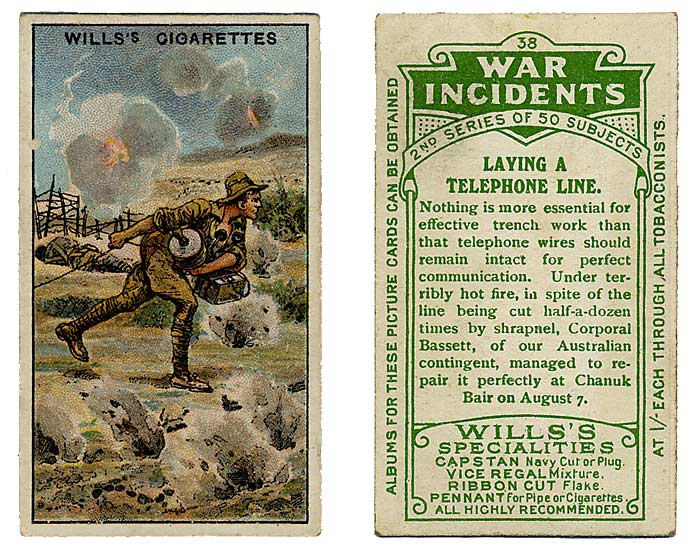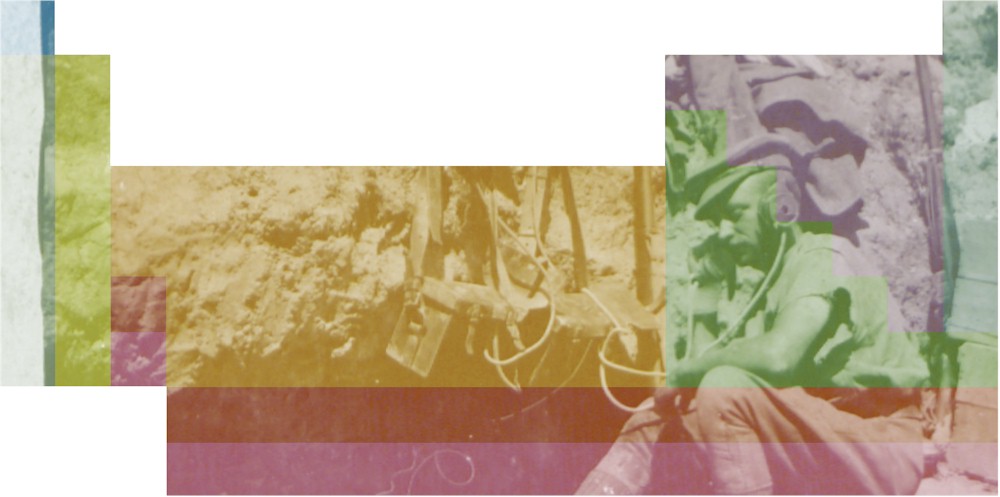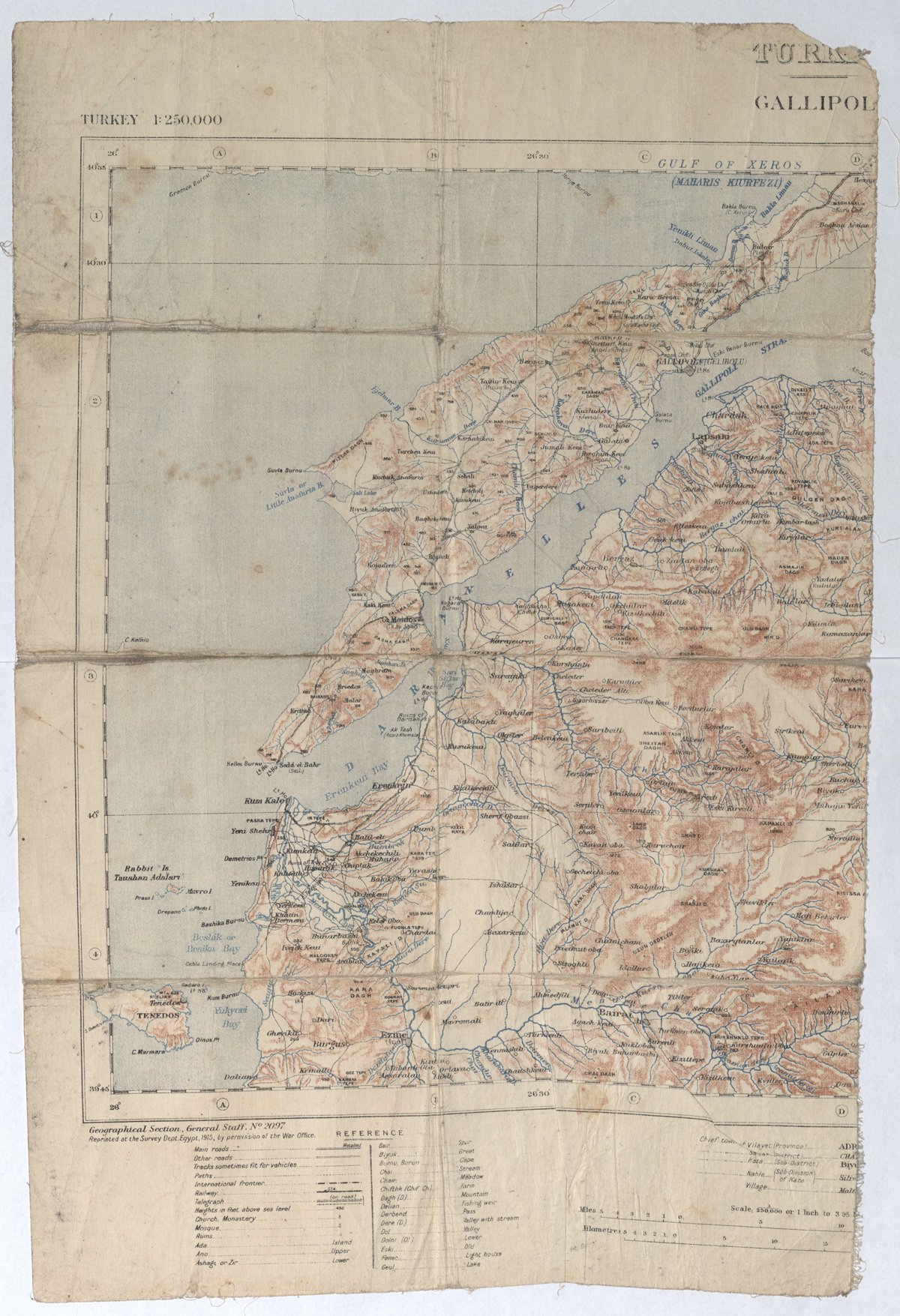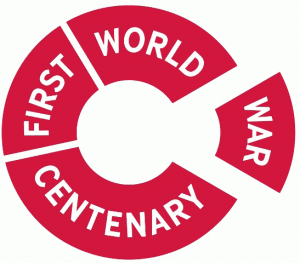To War
In June 1915, Harry and his division arrived in Alexandria where Harry wrote his will. By July, these inexperienced soldiers of Kitchener’s ‘New Army’ had arrived at Helles, at the southernmost tip of the Gallipoli peninsula. There they gained essential combat experience against Turkish troops before being readied for a fresh invasion further north.
Having landed up the coast on 6 August, the objective of the British troops and their allies was to take a precarious salient on Chunuk Bair (Conk Bayırı). In the murderous four days that followed thousands of men on both sides died. One of these men was Harry Moseley. His body, like that of so many others, was never found, but his name is commemorated on Helles Memorial.

Cigarette card of Gallipoli signals work at battle of Chunuk Bair.
Image available in the public domain via Department of Veterans’ Affairs, Commonwealth of Australia.
MOSELEY’S GALLIPOLI
As Brigade signals officer, Harry’s role was to provide a communications system using a mixture of telephone and telegraph cables, messenger runners and visual signalling.
14 July 1915
We moved yesterday to a place where the road is worse than the flies. Sand in boots clothes mouth eyes hair. Sand in the food and the water and the air. All my kit is in danger of being buried. The men are not bearing the heat very well.
Letter from Harry to his mother sent from Gallipoli

Signallers were issued the standard British Army field telephone which could be used on poor-quality lines damaged by bombardment and stretched by limited supplies of wire. This telephone model was extremely successful in the flat, muddy terrain and trenches of the Western Front as well as the arid hills and gullies of Gallipoli. Some signallers took time to record their surroundings and experiences, through evocative photographs as well as drawings and notes.
One contemporary of Harry adapted his official Field Service Message Book as a diary and informal sketchbook where he recorded trench layouts and details.
DEATH
After initial combat experience at Helles, Harry’s division landed near ANZAC cove in early August 1915 and began to attack the strategic high ground held by Turkish forces at Chunuk Bair. It was here on 10 August that Harry was killed in a Turkish counter-attack.
A War Office telegram announced Harry’s death on 30 August 1915. Afterwards his mother made a simple entry for 10 August in her pocket diary to mark the actual date and place he was killed in action. The site of the Gallipoli campaign appears on the map below. Only half survives because the eastern part was irrelevant to the fighting and was ripped off and discarded.
[ Next: Aftermath ]





